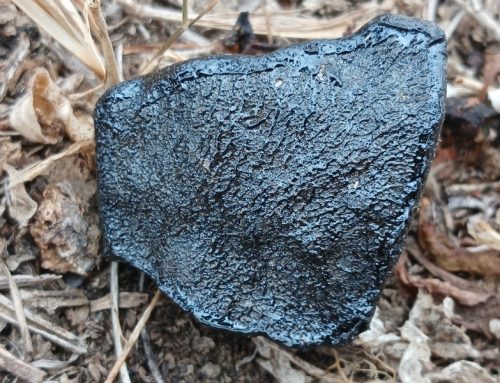
Any decline in our honeybee populations is a direct threat to food and job security in South Africa’s extensive agricultural crop industry.
‘Over 50 agricultural crops, worth over R10,3 billion per annum to the South African economy, are pollinated by honeybees,’ says Shelly Fuller from the World Wide Fund for Nature’s (WWF’s) Sustainable Agriculture Programme, who is leading a new two-year WWF Nedbank Green Trust project aimed at conserving the Cape honeybee through restoring their indigenous forage.
This project builds on the work that’s been done to free up water by removing alien invasive vegetation, in partnership with the local natural resource managers in the Department of Agriculture’s LandCare programme, our corporate partners and the farmers and landowners. Promoting and assisting with the planting of indigenous species that are attractive for honeybees, is the next piece of the puzzle.
The project has been initiated in two pilot areas in the Western Cape – Grabouw and the Langkloof – both major pome and stone fruit-farming areas. In these areas, a lot of work in clearing invasive alien plants from the river courses has already been done. Farmers and landowners now need assistance with the indigenous replanting process, which is a very intensive process.
‘We are collaborating with local farmers, beekeepers and newly established indigenous plant nurseries to understand the role that proactive restoration (or replanting) can play in enhancing the forage of the Cape honeybee (Apis mellifera capensis),’ Fuller explains.
The long-term aim is to scale up the project that is based on the need to better understand the pollination needs of the fruit industry and to work with farmers and landowners as stewards of the land, to catalyse interest in veld management. Another focus of the project is to increase livelihood options, including skills development in restoration activities and beekeeping.
Bee-pollinated crops include canola, lucerne, sunflowers, macadamias, apples, pears, citrus, and stone fruits, such as peaches, apricots, nectarines and plums. In addition, there is the honey industry.
‘The deciduous fruit industry is almost totally dependent on honeybee pollination to obtain optimal fruit set and this is mostly done by paying for managed honeybee hives during the short pollination season,’ says Fuller. ‘The hives are transported across large distances based on foraging sites and pollination service contracts, and come at a price.’
Based on the figures from the pome and stone fruit industry body, Hortgro, the cost of pollination for the 2019 season, as a percentage of direct pre-harvest costs, was estimated to be around 3%. The average cost per hive rental is about R1 000 and roughly two to six hives per hectare are required, depending on the fruit type. The costs are significant for farmers.
Together with the South African Bee Industry Organisation (SABIO) and the Western Cape Bee Industry Association, the project team will be assessing the value of honeybee pollination ecosystem services for agriculture and raising awareness about how important honeybees are for food and job security. ‘We also need to assess how many more hives are needed to pollinate new areas under agricultural production, and to make sure the Cape honeybee populations are growing and thriving on farms and in the natural environment,’ says Fuller.
‘Increased honey production is another potential growth area as South Africa currently imports more honey than it produces. There is an opportunity to boost our honey industry and try to standardise the quality if we can sustainably increase the number of hives and try to keep them localised and healthy.’
With funding from the corporate partnerships the project team is currently establishing or building on indigenous nurseries in the Grabouw and Langkloof communities, which creates a number of jobs. The farmers purchase the plants at a reduced rate. ‘With input from fynbos ecologists and horticulturists we are fine-tuning which species are the easiest to kick-start indigenous biodiversity return in the river areas to stabilise the soil, suppress the risk of alien plant reinvasion and increase the forage for the Cape honeybees,’ Fuller explains. An example is that they have developed best practice to propagate palmiet as a water filter and soil barrier.
The replanting and restoration activities must take place during a certain time of year so that it mimics natural patterns for the best success rate. The alien invasive clearing along the Palmiet River catchment in the Grabouw area is being coordinated by the Groenland Water Users Association (WUA) in the Grabouw region. Corporate partners are critical to do this work and companies like Tesco are part of the fruit value chain as some of their best fruit comes from here.
In the Langkloof, the Gamtoos Irrigation Board and Living Lands, a non-profit organisation, are providing extension support of boots and bakkies on the ground. Pepsico is helping to fund the local nursery in this area.
It’s vital that the pilot succeeds because there simply isn’t enough indigenous forage for honeybees – not just in South Africa, but also globally. Currently, a major source of bee forage in South Africa is the alien invasive eucalyptus or ‘gum tree’. These trees do not flower at the same time as fruit trees and are critically important to sustain the honeybees’ health in the late summer months. However, these trees use up to 12 times more water than indigenous species, pose a fire risk and have seriously invaded catchment areas and rivers.
To support water security efforts, there have been widespread removals of Eucalyptus species over the past decade. This caused a massive outcry from the beekeeping industry, which later resulted in a revision of some of the regulations in 2014. This about-turn is understandable when we explore how critical these trees are to the survival and management of honeybees, the beekeeping industry and all other sectors that benefit directly from their service provisions.
The revision identified six Eucalyptus species to be removed from ‘sensitive areas’. Sensitive areas include riparian habitats, such as rivers, dams, wetlands and estuaries, as well as conservation areas within protected areas, such as nature reserves and conservancies on public and private land.
‘We are also addressing other risks to honeybee health with our collaborators. A major risk is the spraying of pesticides and herbicides when the bees are busy pollinating as it can cause a mass die-off,’ says Fuller. Other risks include habitat (forage) destruction, climate change causing a delayed spring season or unseasonal droughts and storms, hive vandalism and theft, and the honeybees being overworked, which undermines their resilience.
‘Caring for honeybees is critical not only for their survival, but also for ours,’ Fuller concludes. ‘As Albert Einstein said: ‘If the bee disappeared off the surface of the globe, then man would have only four years of life left. No more bees, no more pollination, no more plants, no more animals, no more man.’




